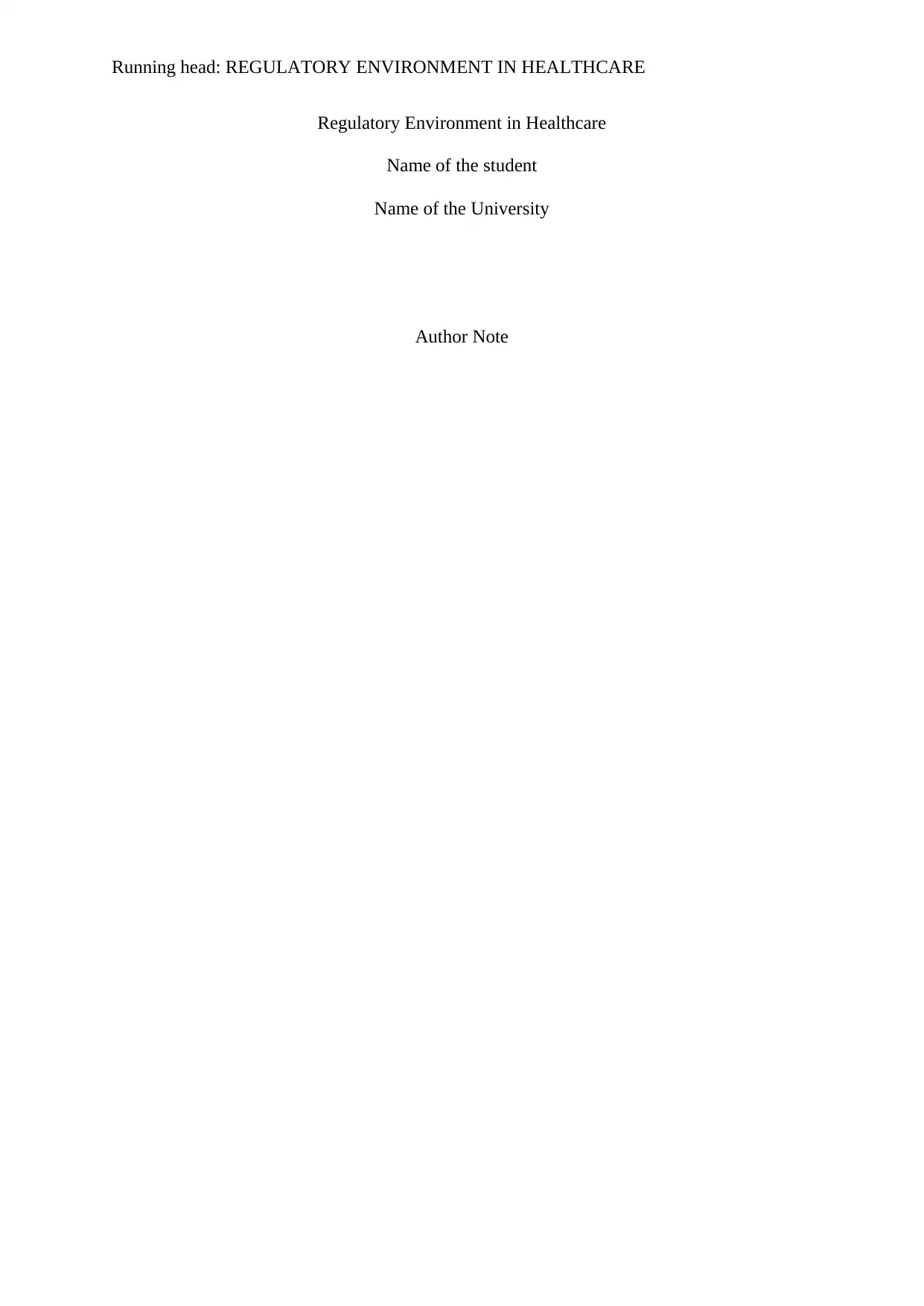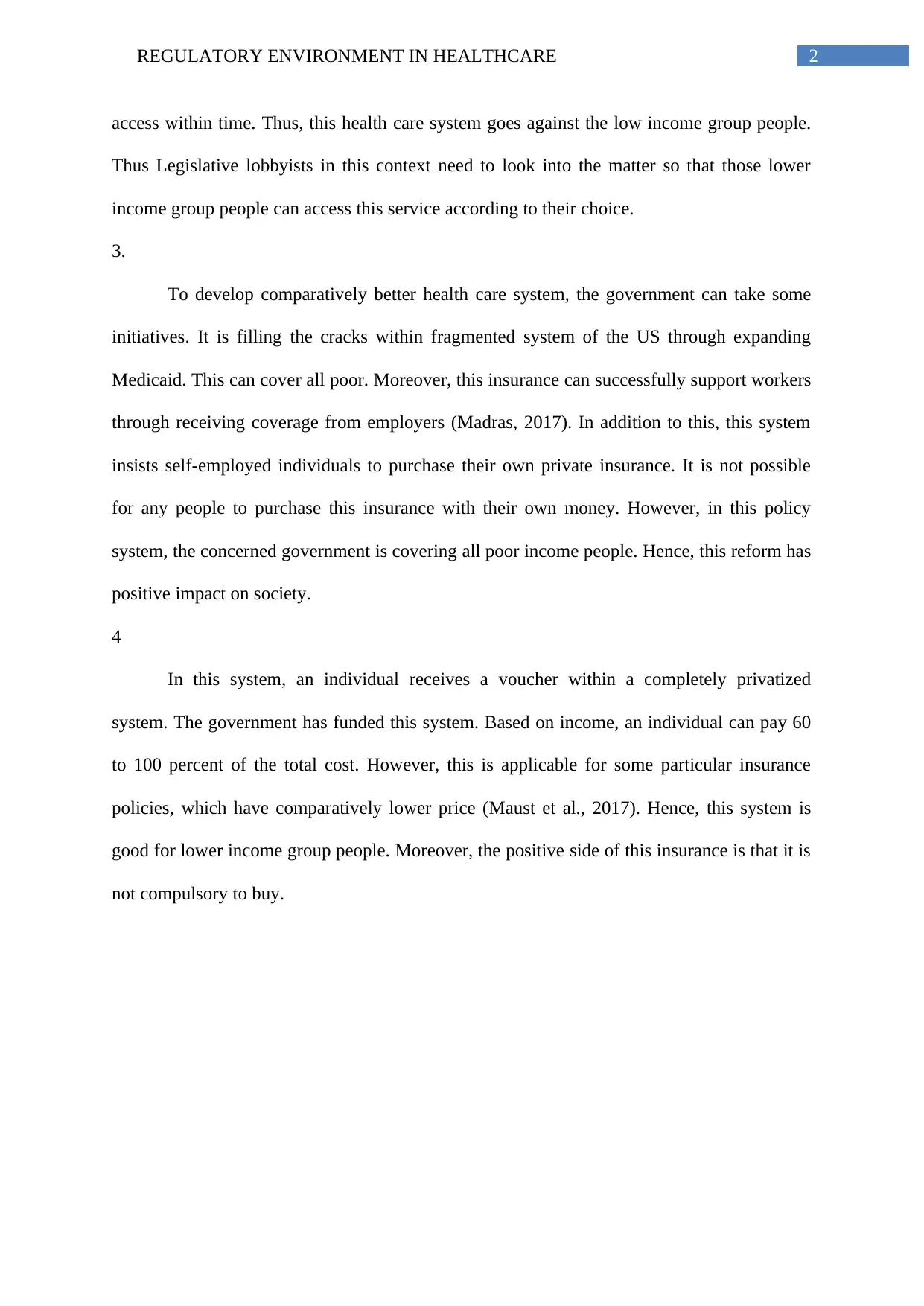Regulatory Environment in Healthcare: A Comparative Study Essay
VerifiedAdded on 2023/05/31
|4
|854
|436
Essay
AI Summary
This essay presents a comparative analysis of the healthcare regulatory environments in the United Kingdom and Canada. In 1991, the UK reformed its healthcare system using quasi-market reforms, with the National Health Service (NHS) providing comprehensive, state-funded care. Canada, in 2002, showed strong support for its existing healthcare system, emphasizing hospital care and physician services without user fees. The Canadian system, while facing challenges, maintains high satisfaction and quality, though it limits patient choice and access. The essay also explores potential improvements to the US healthcare system, such as expanding Medicaid to cover the poor and supporting workers through employer-provided insurance. Additionally, it discusses a voucher system within a privatized framework, where individuals pay a portion of the cost based on income, benefiting lower-income groups. Desklib offers this essay as part of its collection of study resources for students.
1 out of 4










![[object Object]](/_next/static/media/star-bottom.7253800d.svg)